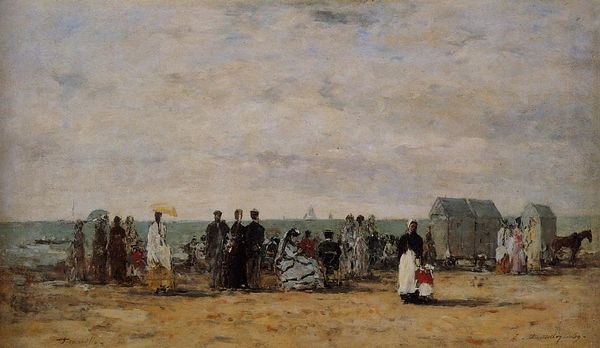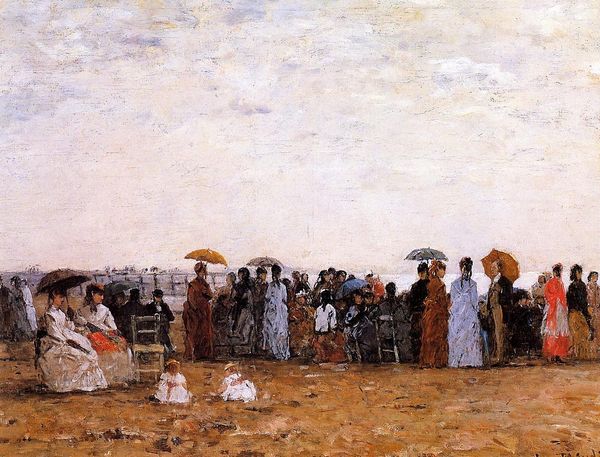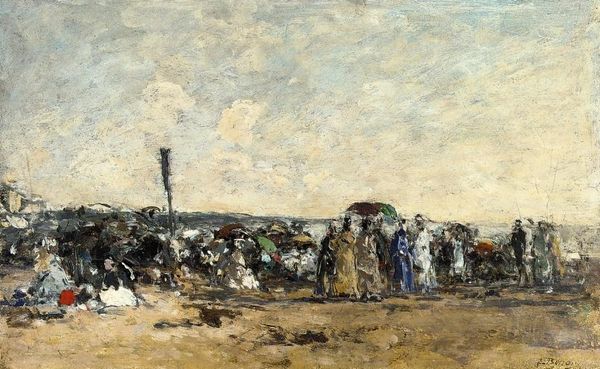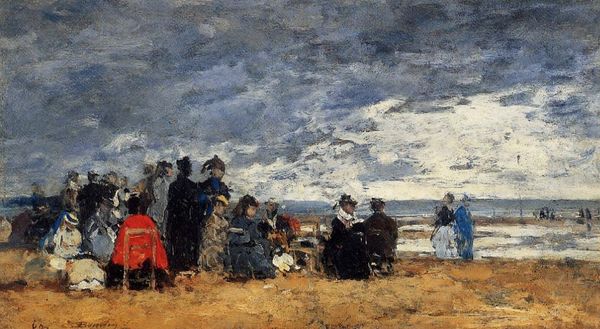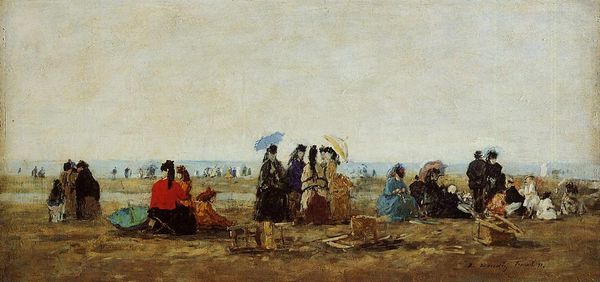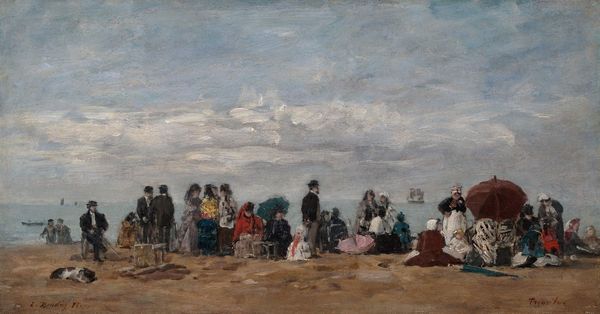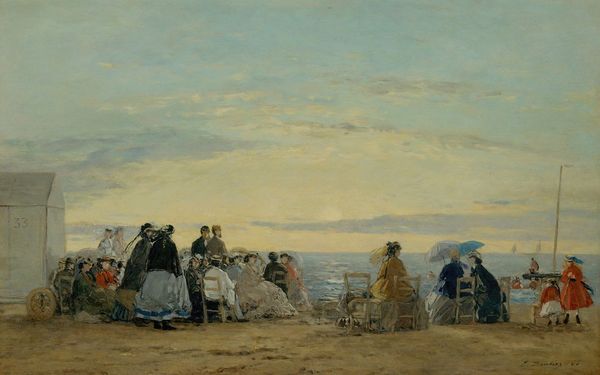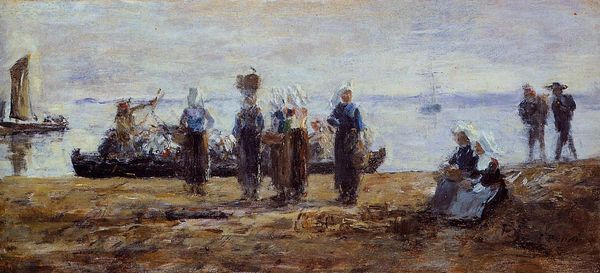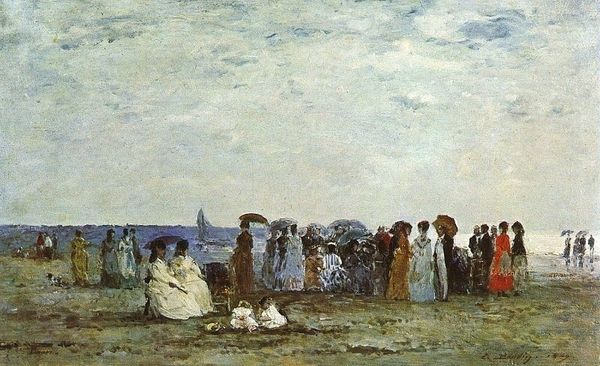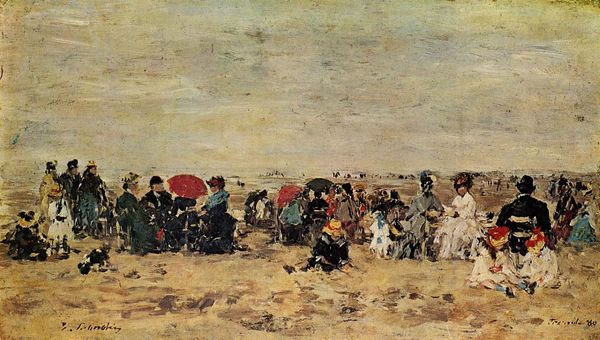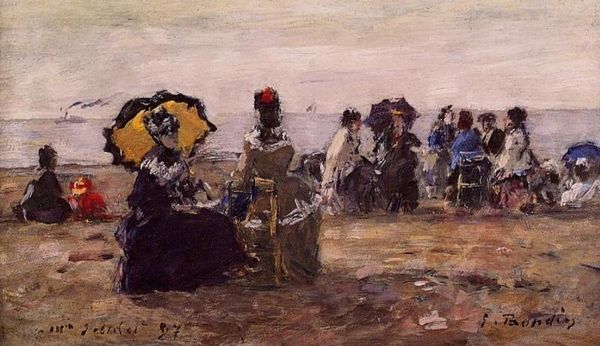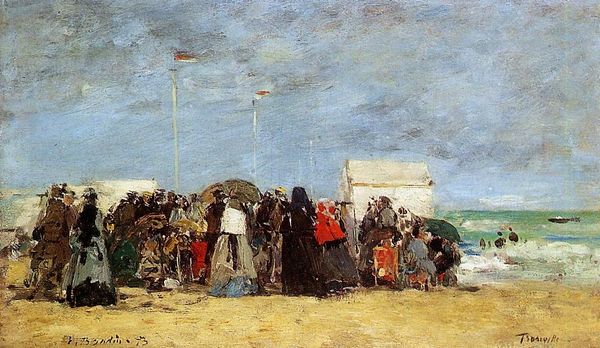
painting, plein-air, oil-paint
#
painting
#
impressionism
#
plein-air
#
oil-paint
#
landscape
#
impressionist landscape
#
figuration
#
oil painting
#
group-portraits
#
seascape
#
genre-painting
#
modernism
Copyright: Public domain
Editor: We are looking at Eugène Boudin's "Figures on the Beach at Trouville" from 1869, an oil painting. There’s a certain stillness in this beach scene; a large group of figures are facing the sea, all under a massive sky, at what looks like either sunrise or sunset. What do you notice, especially regarding how Boudin captured this specific place and time? Curator: Boudin's beach isn’t merely a place, but a stage where social rituals unfold against the vast theater of nature. The beach becomes a kind of threshold—linking land and sea, civilization and the sublime. Consider how the figures, though numerous, are generalized, almost like symbols themselves. What memories or shared understanding do these types of symbols evoke in you? Editor: That makes me think of collective experience, almost like an archetype—the human desire to gather and contemplate the power of nature, particularly the sea. The colors also evoke those feelings. Curator: Exactly. Boudin offers us not just a record of what was seen, but what was felt and understood about leisure and society. And colors possess a distinct symbolic register. Notice the interplay between the muted earth tones of the beach and the vibrant colors of the sky. What could these juxtapositions tell us about the intersection of human life and nature? Editor: I think I am beginning to see this artwork not as a simple snapshot of a beach scene, but a meditation on time, society, and our relationship to nature. Curator: Yes! Each brushstroke seems to carry echoes of social change, psychological reflection, and humanity’s ceaseless fascination with the sea. Art unveils new possibilities each time we bring it to light.
Comments
No comments
Be the first to comment and join the conversation on the ultimate creative platform.
